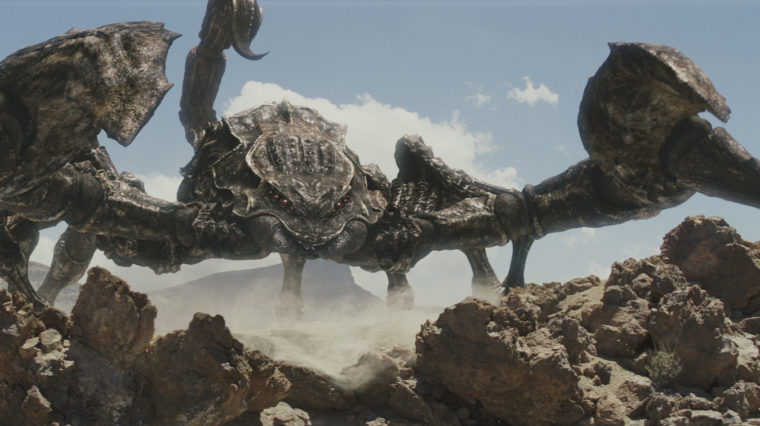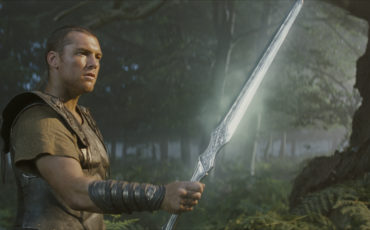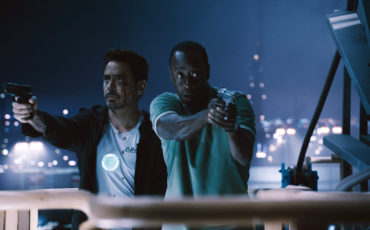
SHOOT MAG: Editing & Postproduction – Challenges Presented, Lessons Learned
What was the biggest creative challenge you faced on Clash of the Titans? And what noteworthy surprise or surprises arose (a lesson learned or an unexpected discovery) during the course of the project?
Simon Stanley-Clamp, Visual Effects Supervisor: One of the biggest challenges of working on Clash of the Titans was generating CG dust, sand and gravel particles. Our main sequence was a battle involving giant scorpion-like creatures called scorpiochs which we created in CG. Scorpiochs throwing warriors around a desert would naturally stir up dust and debris, but as they’re CG characters, very little debris was generated on the shoot. We needed to develop a customised particle simulation solution and our choices were either Maya fluid effects or Houdini. In the end we chose Houdini because it’s a stunning tool when used by people who understand it.
We wrote a completely new fluid dynamics simulation pipeline centred on Houdini and rendered through Mantra. It was designed to create fluid dust simulations, gravel hits and terrain deformation where the scorpiochs’ feet hit the ground, and sand and light in the atmosphere. The simulation was fully self-shadowing and interactive with the scorpiochs’ geometry. Without developing this proprietary software, we wouldn’t have been able to create the amount of dust, sand and gravel needed to make the interaction between the live action characters and the CG scorpiochs look realistic. It’s been a great addition to our pipeline and we’re already using it on other projects.
A creative challenge we faced on Clash of the Titans was some very complex compositing work. We were using both Shake and Nuke. Although we’ve used Nuke before, we really pushed it in ways we hadn’t before for one particular shot. We had 26 filmed plates which were shot from above as locked off tiles which we had to project onto rudimentary 3D geometry of the terrain and set. You simply can’t do that in Shake.
Once we’d imported and reprojected the plates onto the geometry to construct the terrain we had to import a giant scorpion like creature – a scorpioch – and add camera moves which involved a lot of to-ing and fro-ing between animation and compositing. This process isn’t possible in Shake because it doesn’t have a 3D architecture. But Nuke is a hybrid 2D/3D tool which works in real 3D space so we were able to reproject stills onto geometry to create a terrain with a pseudo-3D look.
We have unlimited licences of Shake and there are lots of artists who can use it, whereas at the time we had fewer seats of Nuke and it has a smaller user base. But being a relatively small team, everyone used Nuke on some of their shots. We even used it to do some very sophisticated clean-ups. We’ve since expanded our Nuke licenses as it’s a very sophisticated tool and definitely the way forward. We now have a Nuke site license which is 500 seats.




